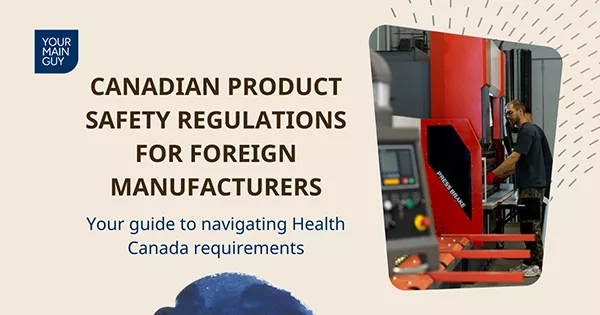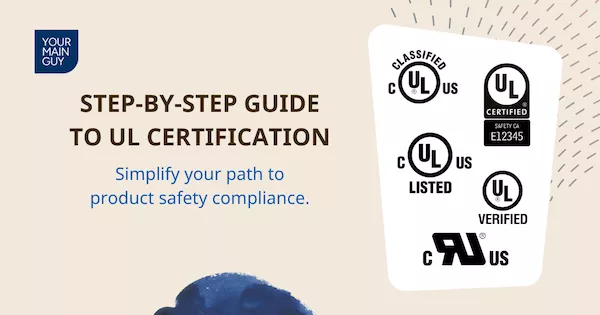Canadian Product Safety Regulations: What Foreign Manufacturers Need to Know
Learn essential Canadian product safety regulations for foreign manufacturers. Understand Health Canada requirements, testing standards, bilingual labeling rules, and compliance documentation needed to enter the Canadian market.
Why Are Canadian Product Safety Regulations Unique?
Navigating the Canadian product safety landscape presents unique challenges for foreign manufacturers. At the heart of Canada's regulatory framework lies Health Canada, the federal department responsible for helping Canadians maintain and improve their health. Through the Canada Consumer Product Safety Act (CCPSA), Health Canada establishes and enforces comprehensive safety standards that every manufacturer must meet before their products can enter the Canadian market.
Unlike many other jurisdictions, Canada's regulatory framework emphasizes prevention through pre-market safety assessments while maintaining strict post-market surveillance. This dual approach ensures consumer safety throughout a product's lifecycle. For foreign manufacturers, understanding these regulations is crucial not only for compliance but also for maintaining market access in one of North America's largest economies.
What Products Fall Under Health Canada's Jurisdiction?
Health Canada's regulatory oversight extends to a vast array of consumer products, but understanding the scope is crucial for manufacturers. The CCPSA applies to consumer products that are typically used for non-commercial purposes, including, but not limited to:
- Children's products (toys, clothing, furniture)
- Household products
- Sporting goods and equipment
- Electronics and electrical products
- Cosmetics and personal care items
- Furniture and home décor
- Outdoor and recreational equipment
However, several product categories fall under separate regulatory frameworks:
- Food and drugs (regulated by the Food and Drugs Act)
- Medical devices
- Motor vehicles and tires
- Pest control products
- Firearms and ammunition
Foreign manufacturers should note that even if their products comply with regulations in other countries, they must specifically meet Canadian requirements, which may differ significantly.
What Are the Mandatory Pre-Market Requirements?
Before entering the Canadian market, manufacturers must fulfill several crucial pre-market obligations:
Testing and Certification
- Products must undergo safety assessments according to applicable Canadian standards
- Testing must be conducted by accredited laboratories recognized by the Standards Council of Canada
- Results must demonstrate compliance with all relevant safety requirements
- Additional testing may be required for specific product categories
Documentation Requirements
- Technical files detailing product specifications
- Risk assessments and mitigation strategies
- Test reports from accredited laboratories
- Manufacturing quality control procedures
- Supply chain documentation
Language Requirements
One of Canada's distinct features is its bilingual nature, which extends to product requirements:
- All mandatory safety information must appear in both English and French
- Instructions, warnings, and product information must be bilingual
- Text size and placement must ensure equal prominence of both languages
Canadian Representative
Foreign manufacturers must:
- Designate a Canadian representative or maintain a Canadian office
- Ensure this representative can handle regulatory communications
- Maintain documentation accessible to Canadian authorities
At Your Main Guy, we can provide you with a representation in Canada. Contact us to learn more.
How Do Safety Standards Differ Between Canada and the US?
While Canada and the US share many similarities in their approach to product safety, several key differences exist that manufacturers must understand:
Regulatory Framework
- US: Consumer Product Safety Commission (CPSC) oversees product safety
- Canada: Health Canada maintains jurisdiction through the CCPSA
- Different reporting requirements and compliance timelines
- Distinct approaches to enforcement and penalties
Specific Requirements
- Bilingual Labeling
- Canada requires both English and French
- US accepts English-only labeling
- Testing Standards
- Some Canadian standards exceed US requirements
- Different test methods may be required
- Separate certification processes
- Chemical Restrictions
- Canada maintains its own restricted substances list
- Different threshold limits for certain chemicals
- Unique documentation requirements
- Children's Products
- Different age grading requirements
- Distinct small parts regulations
- Varying flammability standards
What Documentation Must Foreign Manufacturers Maintain?
Proper documentation is crucial for compliance with Canadian regulations. Manufacturers must maintain:
Technical Files
- Detailed product specifications
- Manufacturing processes and controls
- Risk assessments and mitigation strategies
- Design modifications and updates
- Quality control procedures
Test Reports
- Results from accredited laboratories
- Compliance certificates
- Regular testing updates
- Batch testing documentation
Supply Chain Records
- Supplier information and certifications
- Material safety data sheets
- Component sourcing documentation
- Distribution records
Record Retention
- Minimum 6-year retention period
- Readily accessible to authorities
- Regular updates and maintenance
- Secure storage systems
What Are Canada's Specific Labeling Requirements?
Canadian labeling requirements are among the most stringent globally. Here are a few examples:
Bilingual Information
- Product name and description
- Safety warnings and instructions
- Usage guidelines
- Manufacturer contact information
Safety Information
- Clear hazard symbols where applicable
- Age restrictions and warnings
- Usage limitations
- Emergency procedures
Product Identification
- Model numbers and batch codes
- Manufacturing date and location
- Canadian registration numbers if applicable
- Traceability information
Country of Origin
- Clear indication of manufacturing origin
- "Made in" statements in both languages
- Additional provincial requirements where applicable
How Does Product Testing and Certification Work?
The Canadian testing and certification process involves several key elements:
Accredited Laboratories
- Must be recognized by Standards Council of Canada
- Regular audits and accreditation renewal
- Specific expertise in product categories
- Understanding of Canadian standards
Testing Requirements
- Initial type testing
- Regular production testing
- Batch testing where required
- Market surveillance testing
Certification Options
- Self-declaration for lower-risk products
- Mandatory third-party certification for certain categories
- Recognition of international certificates in some cases
What Are the Incident Reporting Requirements?
Canadian incident reporting requirements are specific and time-sensitive, requiring careful adherence to strict timelines for various types of incidents. These requirements ensure prompt communication with authorities and facilitate timely investigations and corrective actions.
Mandatory Reporting
- Incidents involving death or serious injury
- Near-miss incidents
- Product defects that could cause harm
- Incorrect or insufficient safety labeling
Timeline Requirements
- Two-day reporting for serious incidents
- Ten-day reporting for other incidents
- Regular updates on investigation progress
- Final report submission
Documentation Needs
- Detailed incident description
- Product identification information
- Root cause analysis
- Corrective action plans
Follow-up Procedures
- Investigation requirements
- Corrective action implementation
- Communication with authorities
- Consumer notification processes
Successfully navigating Canadian product safety regulations requires careful attention to detail and thorough understanding of the requirements. Foreign manufacturers must ensure they:
- Understand the full scope of applicable regulations
- Maintain comprehensive documentation
- Meet all testing and certification requirements
- Comply with bilingual labeling rules
- Establish effective incident reporting procedures
By following these guidelines and maintaining open communication with Canadian authorities, manufacturers can successfully enter and maintain their presence in the Canadian market while ensuring consumer safety and regulatory compliance.




